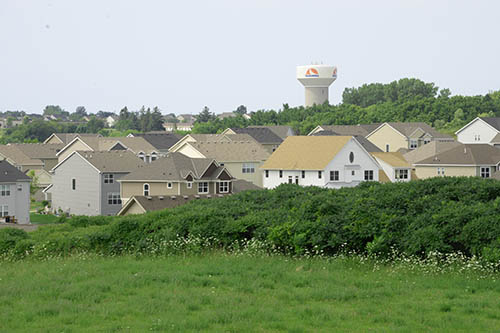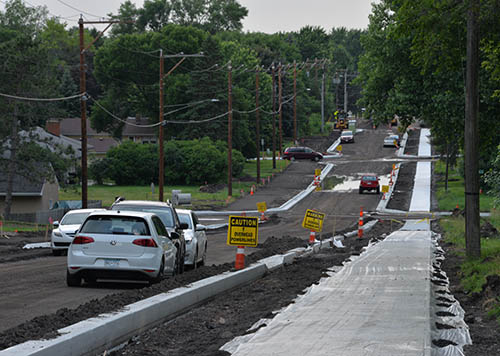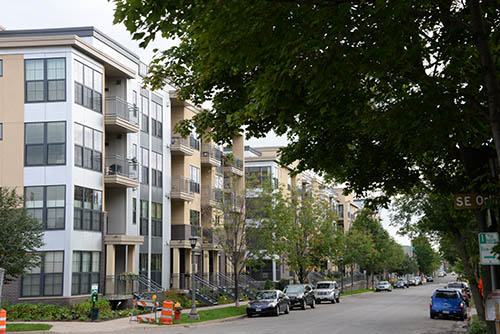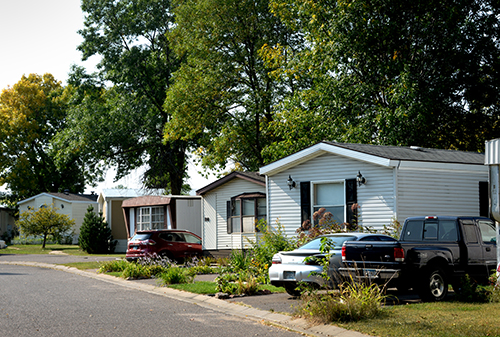Local comprehensive plans and the Met Council’s role
 Local comprehensive plans reflect the vision of cities and townships in the Twin Cities region, describing how their localities will grow, develop, and prosper. These locally created plans identify and designate, for example, local parks, residential development standards, local street connections, utility extensions and needed infrastructure improvements, and areas reserved for agricultural uses.
Local comprehensive plans reflect the vision of cities and townships in the Twin Cities region, describing how their localities will grow, develop, and prosper. These locally created plans identify and designate, for example, local parks, residential development standards, local street connections, utility extensions and needed infrastructure improvements, and areas reserved for agricultural uses.
By statute, local plans must correspond to broader infrastructure and investment plans for the seven-county area related to the “regional systems” of transportation (arterial road networks, transit, and local airports), wastewater infrastructure, and regional parks and trails.
The Metropolitan Council develops plans related to infrastructure and services deemed “regional,” and reviews local plans prior to local adoption. It’s a process and collaboration that helps to ensure that growth in the region is synchronized with regional infrastructure investment.
Local units of government in the metro area number 188 cities and towns, along with the seven counties, which submit comp plans on behalf of townships. Local governments update and submit their plan updates for Met Council review every 10 years, and amend plans as needed in the interim. Though local plan updates were due to the Met Council in December 2018, requests for time extensions extends the process to the end of 2019.
State law sets the stage for the comprehensive planning process
The Minnesota Legislature established the Metropolitan Land Use Planning Act in 1976 and tasked the Met Council with ensuring orderly and economic development within the seven-county metro area.
 Using the U.S. decennial census as a planning starting point, the Met Council adopts a regional development plan, as well as policies and strategies to help achieve those high-level regional aspirations.
Using the U.S. decennial census as a planning starting point, the Met Council adopts a regional development plan, as well as policies and strategies to help achieve those high-level regional aspirations.
Once regional plans and policies are in place, state law requires local governments to develop local plans that include certain elements, including:
-
Land use: Identifying when, where and how much development will occur
-
Transportation: Outlining plans for principal arterial highways, and transit service and facilities
-
Water resources: Addressing issues related to sewers, water supply and surface water
-
Parks and trails: Designating areas for recreation
-
Housing: Planning for housing that meets needs and demand
-
Implementation: Detailing how the community will achieve the plan and when infrastructure investments will occur
Under state law, the Met Council reviews local plans to ensure they conform to and are consistent with regional systems and policies, and are compatible with plans of nearby localities or affected organizations like school or watershed districts.
Comprehensive planning: a local and regional partnership
By statute, the Council’s role is to review local comprehensive plans to ensure they do not have a “substantial impact on or contain a substantial departure from” metropolitan system plans for regional parks, transportation, and wastewater.
Local governments are responsible for ensuring that their official controls, such as zoning, do not conflict with their own local comprehensive plans or allow activities that conflict with metropolitan system plans.
 Local governments must also meet the requirements of other jurisdictions, such as watershed districts and the Minnesota Department of Natural Resources. The Council facilitates a coordinated review process with other agencies to ensure consistency with the requirements of those jurisdictions.
Local governments must also meet the requirements of other jurisdictions, such as watershed districts and the Minnesota Department of Natural Resources. The Council facilitates a coordinated review process with other agencies to ensure consistency with the requirements of those jurisdictions.
“It’s the role of the Met Council to focus on regional systems and potential impacts of local decision-making on regional wastewater, transportation, and parks systems,” said Angela Torres the Council’s manager of Local Planning Assistance. “Statute does not authorize the Met Council to dictate local visioning, planning processes, or local decision-making.
“Within the Met Council’s overall planning framework, a local government has the freedom and flexibility to choose how, where, and under what conditions to support forecasted growth,” said Torres.
Torres says it’s up to local governments to plan and shape growth in their jurisdiction and provide residents and other stakeholders the opportunity to participate and offer their comments and ideas.
People who disagree with local plans may choose to appeal that planning outcome through their local political process or through other appropriate venues.
Council determines affordable housing need but not how that need is met
The Council’s role with respect to the housing element in comprehensive plans, specifically affordable housing, is sometimes misunderstood. Under state law, housing is not a system, but the law does require the Council to:
Council housing policy calls for a range of housing options “that give people in all life stages and of all economic means viable choices for safe, stable and affordable homes.”
 Local plans for housing must assess the need for housing to meet forecasted growth. They must also incorporate plans to guide land use in a manner that meets the local share of the region’s need for housing that’s affordable.
Local plans for housing must assess the need for housing to meet forecasted growth. They must also incorporate plans to guide land use in a manner that meets the local share of the region’s need for housing that’s affordable.
“The Met Council has a role in reviewing local housing plans and allocating to cities and towns their future share of the ‘regional need’ for housing that’s affordable for lower-income working people and families,” said Torres. “At the same time, however, housing is not identified in statute as a ‘regional system,’ so Council authority with respect to housing is not the same as it is for transportation, wastewater, and regional parks.”
The Council, for example, has the authority to require local planning for housing, but does not have the authority to force housing construction.
In addition to elements to include in comp plans that are designated in statute, the Council encourages cities and towns to incorporate plans that ensure resilience in the face of a changing climate. Also, plans to promote economic development within communities.
More information on comprehensive planning
Additional information about comprehensive planning is available in the Council’s Local Planning Handbook and comprehensive planning facts.